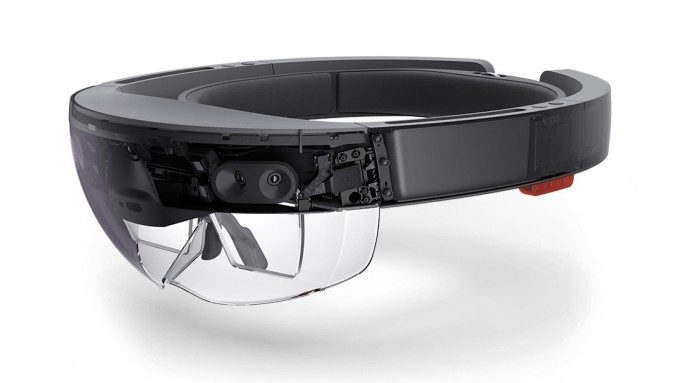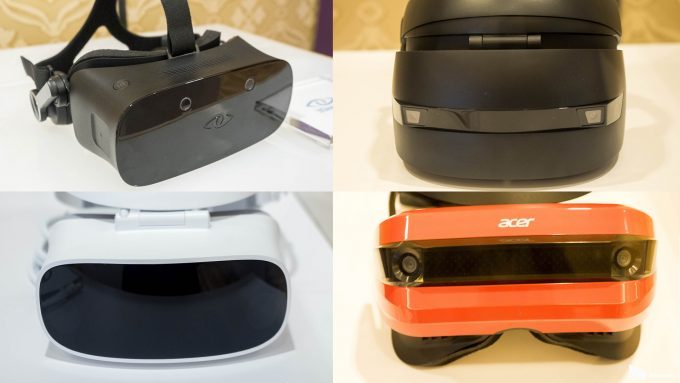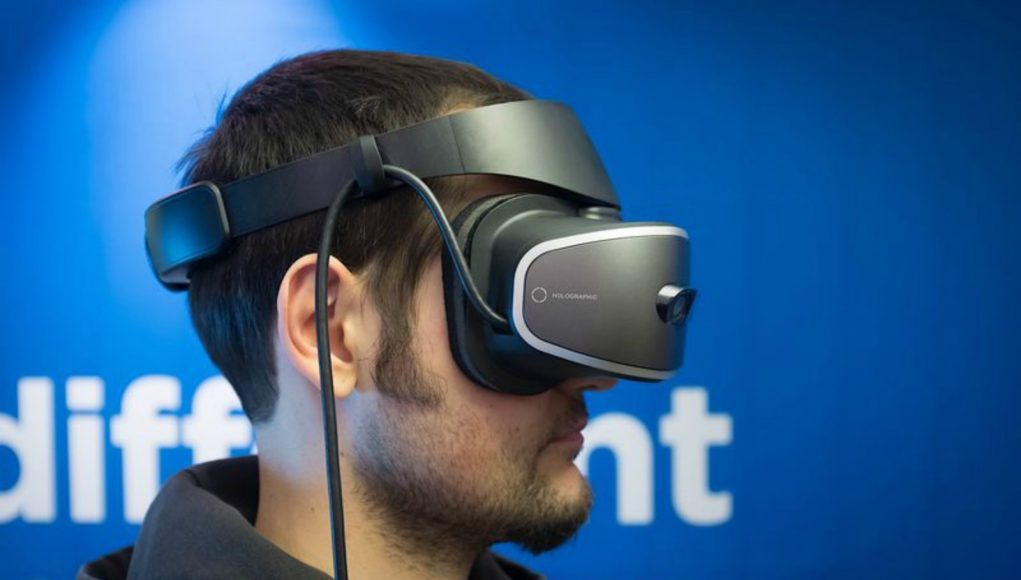One of the first in a line of Windows Holographic powered immersive devices, Lenovo’s first mixed reality headset will be here in time for US “back to school”, according to Lenovo’s North America VP of Consumer Products Mike Abary.
Windows Holographic, a set of APIs integrated into Microsoft’s Windows 10 operating system, was first touted by the computing giant during the company’s surprise reveal of their augmented reality headset, the HoloLens. The HoloLens represented one of MS’ vision for the future of immersive computing platforms, with impressive computer vision driven inside-out tracking, a transparent augmented reality display and a completely untethered experience, the existence of HoloLens signified just how serious Microsoft were about positioning itself as ready to embrace the next computing age.
 But with HoloLens, Microsoft is leaving the mainstream Windows Holographic hardware push to partner – a strategy the company has adopted for decades of course. A we detailed earlier in the year, the initial lineup for Windows Holographic hardware was announced in December of last year, with Microsoft OEM stalwarts Asus, Acer, Dell, HP, and Lenovo all signing on to produce VR hardware for the platform. Chinese VR headset maker 3Glasses also joined the group, and will support the Windows mixed reality environment on their S1 VR headset in the first half of 2017.
But with HoloLens, Microsoft is leaving the mainstream Windows Holographic hardware push to partner – a strategy the company has adopted for decades of course. A we detailed earlier in the year, the initial lineup for Windows Holographic hardware was announced in December of last year, with Microsoft OEM stalwarts Asus, Acer, Dell, HP, and Lenovo all signing on to produce VR hardware for the platform. Chinese VR headset maker 3Glasses also joined the group, and will support the Windows mixed reality environment on their S1 VR headset in the first half of 2017.

Now it looks as if Lenovo’s mixed reality headset offering will be one of the first Windows Holographic devices to launch. Speaking to Twice, the company’s VP of Consumer Products stated that it would see a launch in time for “back to school”, according to Twice’s interpretation. This could mean the it’ll be available before mid-August and will reportedly cost less than the Oculus Rift which received an aggressive price cut just recently. This could mean that the new Lenovo headset which, like the HoloLens leverages onboard cameras (2 in this case) to drive its inside-out tracking system, could come in as low as $300, according to an earlier report from The Verge. The headset also sports dual 1440×1440 OLED displays but, unlike the HoloLens, is a tethered device requiring a Windows 10 PC to run and also sports no similar AR-style transparent visor.
The new headset will join the company’s new ‘Legion’ PC hardware too, with the VR-capable Y720 laptop due in 2017 too.
Microsoft just last week shipped its latest milestone Windows 10 ‘Creator’s Update’ which amongst many other things included Mixed Reality support for the OS. This opens the door for the release of those partner headsets, with Lenovo seemingly positioning itself as one of the first to market.







